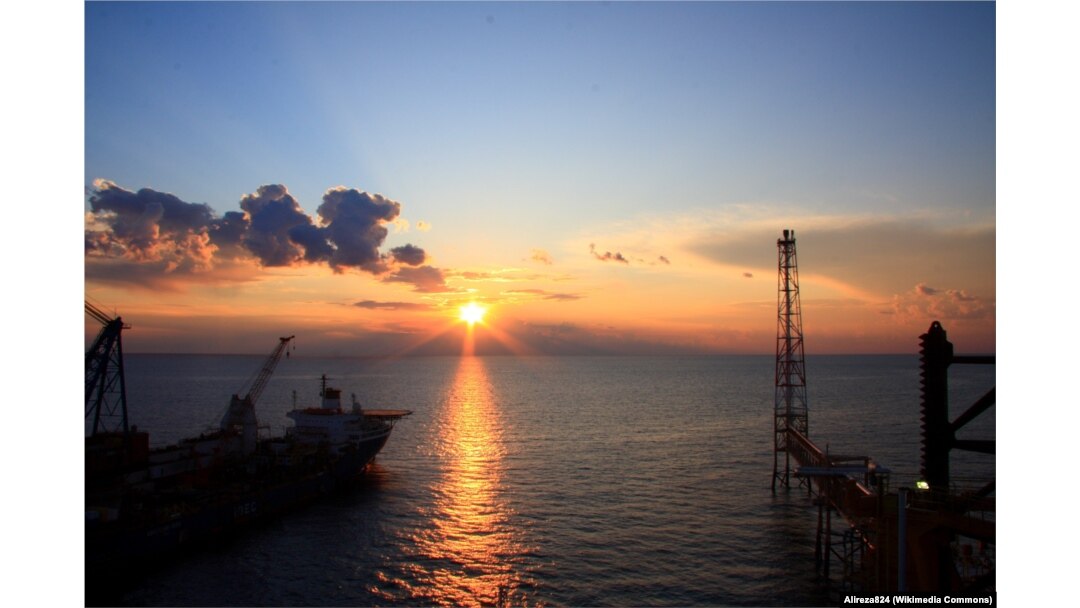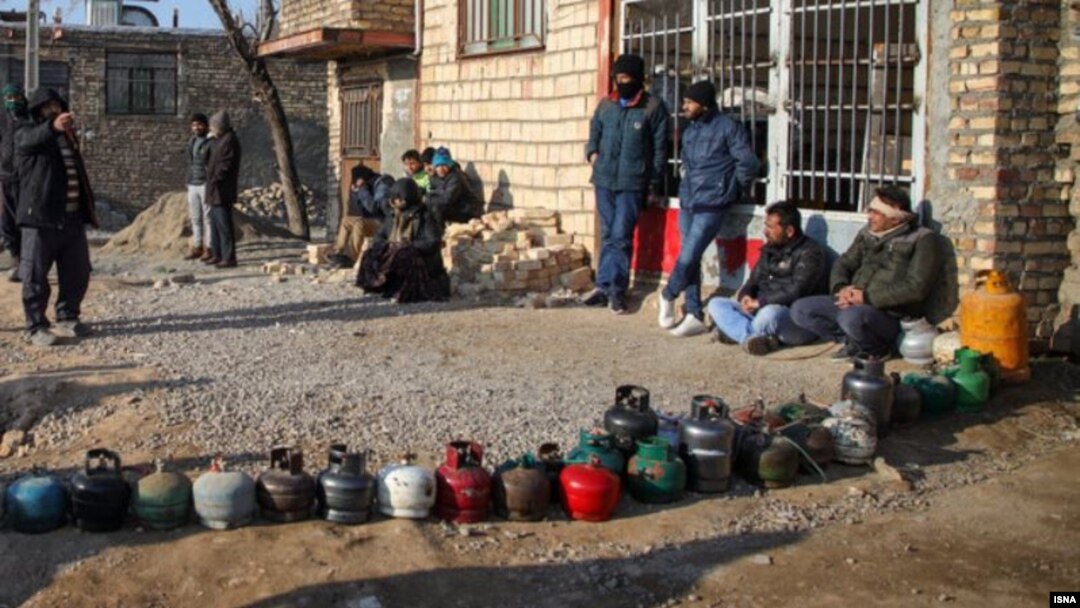As winter approached, Iran was relishing the prospect of falling temperatures that could put Europe in a deep freeze and allow Tehran to bask in the wealth of its formidable natural-gas reserves.
A difficult winter for Europeans would offer many advantages, including leverage in protracted negotiations in Vienna aimed at reviving Iran’s stalled nuclear deal with world powers, according to the ideas floated by Iranian officials and state media.
“Wait two months, until winter arrives in Europe, to get a better deal,” the Kayhan newspaper, which often echoes the hard-line views of Supreme Leader Ayatollah Ali Khamenei, wrote as negotiators met in the autumn of 2022.
The thinking was that European nations across the negotiating table would be compelled to lift harsh sanctions against Iranian energy exports. And as Europe struggled to keep warm, Iran would not only be able to capitalize on an agreement reached in the summer to import Russian natural gas, but also be in a position to fill the void left after Russian natural-gas deliveries to Europe were restricted as punishment for the Kremlin’s unprovoked war against Ukraine.
Let Them Burn Cat Dung
Even as the nuclear talks stalled, the sanctions remained in place, and promised Russian natural-gas deliveries never materialized, the mood in Iran was still optimistic as severe cold arrived in the Islamic republic in January.
Iran would have no trouble weathering the cold, the Javan newspaper, which is close to the powerful Islamic Revolutionary Guards Corps, gloated, whereas “the French have received remittances of firewood, the Germans have gone to coal, the British are burning cat feces, and the Swedes go to work with blankets to survive this harsh winter.”
But as temperatures plunged and demand for natural gas rose at home, Iran was not in a position to deliver. Authorities instead scrambled to conserve gas, leading to the closure of some schools and public facilities. Citizens angered over higher gas prices and cutoffs held scattered protests, adding a new cause to ongoing anti-government demonstrations in Iran.

The sun sets on Iran's South Pars gas field.
Meanwhile, the increased use of electricity overwhelmed power grids, while the burning of dirty fuels such as mazut and animal dung led to a spike in air pollution.
"Over the past few days, when the temperature reached -20 degrees Celsius...we could not provide kerosene or liquid petroleum gas to the people to use,” the semiofficial ILNA news agency quoted Mohammad Sargazi, a lawmaker from the southeastern province of Sistan-Baluchistan, as saying last month. "The conditions were so difficult that they burned firewood and animal excrement in the villages."
Failed Energy Management
Social media posts painted a picture of desperation as gas was cut off to many areas of Iran in the middle of the cold snap.
Videos showed long lines of consumers around the country waiting to get refills of bottled gas for cooking and other household needs. Young students were shown bundled up with blankets in freezing classrooms. Other images emerged of outraged Iranians taking to the streets to protest the lack of supplies and gathering outside aid offices to demand electric heaters.
But while Iranians and observers were incredulous as to how a country with such enormous natural-gas reserves could continue to find itself in such a situation, experts had a simple answer: decades of misguided strategies that have made Iran overly dependent on natural gas and put the country’s energy security at risk.
“Iran holds the second-largest natural-gas reserves in the world,” said Umud Shokri, a Washington-based energy strategist and faculty associate at George Mason University. “[But] due to high domestic consumption, mismanagement, sanctions, and a lack of financial resources and highly advanced technology, it has not been able to use this capital efficiently.”
Despite its vast reserves, Iran has been a net importer of natural gas since 2011, when it turned to supplies from Turkmenistan in an attempt to reverse its perennial energy crisis, Shokri told RFE/RL in written comments.
The administration of President Ebrahim Raisi “does not have a proper understanding of energy security, energy diplomacy, and energy transition,” which he said “requires an economy based on green and clean energies.”-- Umud Shokri, George Mason University
But the additional gas has failed to match Iran’s status as one of the world’s top five consumers of natural gas. Shortages rose to up to 300 million cubic meters of gas a day this winter, and the deficit is only growing bigger as domestic production declines, aging infrastructure deteriorates, and Iran struggles to get the foreign investment and technology it needs to turn things around.
Domestic gas production did rise considerably over the past two decades, boosted by the exploitation of the world’s largest gas field: the South Pars field, 3,000 meters below the seabed of the Persian Gulf. But like most of Iran’s gas fields, production at South Pars is expected to drop steadily without the construction of massive new drilling platforms.
Even if Iran could work out a deal today with a foreign partner with the expertise to construct such platforms -- as Qatar did on its share of South Pars -- it would cost $25 billion and take five years to see results, according to Shokri.
Dalga Khatinoglu, an expert on Iranian energy issues, said that much of the country’s natural gas is wasted as a result of gas leaks, inefficient electricity production, the lack of proper storage facilities, and the flaring off of gas that the country does not have the technology to capture.
And whereas Iran invested up to $20 billion annually into its oil and gas sector in the early 2000s, that figure was halved by 2016 and has fallen to only about $3 billion per year since, according to Khatinoglu.
Sanctions, Russia In The Equation
Iran took a big step toward injecting new life into its energy sector after it agreed to the nuclear deal with world powers in 2015. Under the agreement, some international sanctions against Iran were lifted in exchange for curbs on Iran’s disputed nuclear program. Within a year, Iran had inked a $5 billion deal with the French energy major Total, one of the few Western companies with the required expertise and technology, to further develop and install one new platform at the South Pars field.
But when the United States withdrew from the nuclear accord in 2018 and reintroduced sanctions that could penalize companies working with Tehran, Total left the project. Iran next turned to the China National Petroleum Company (CNPC) for a partnership to develop South Pars, but in 2019 the CNPC also pulled out of the project.
Installation of a new platform at the South Pars gas field.
Next in line was Russia, which shares Iran’s interest in circumventing Western sanctions, leading to a $40 billion agreement in July with the Russian energy giant Gazprom to develop a number of gas and oil fields. But experts say that Gazprom, like the CNPC, lacks the capabilities needed to further develop South Pars.
Iran has also not received any of the 55 million cubic meters of Russian gas it was to import under the deal with Moscow.
The Russian supplies, Shokri said, would have been used by Iran both for domestic consumption and to pull off a swap under which Iran would receive Russian gas and send its own gas to Russian customers in the region, taking a cut along the way.
In the end, the deal did not pan out, in large part due to Moscow’s existing gas transit routes through Turkey, which left no excess gas to be delivered to Iran. Russian reluctance to aid a potential gas exporting rival also played a part, according to Shokri.
“Considering that Russia can no longer play an important role in Europe's energy security, the country's oil and natural-gas export market will shift to Asia,” Shokri said. “Moscow does not want Iran to be a competitor in the energy market of Asia.”
A Green Solution?
Iranian Oil Minister Javid Oji, speaking to reporters on the sidelines of a government meeting last week, touted plans to develop its energy sector.
Acknowledging that the country was in the midst of an unprecedentedly cold winter, Oji defended price hikes for natural gas, noted that millions of consumers had been spared cutoffs, and said that relief would come by the end of the year as more domestically produced supplies are injected into the country’s pipeline network.
But experts counter that such fixes are not a long-term solution.
Shokri pointed to hitches in previous workarounds, such as the loss of imported natural gas from Turkmenistan in January, when Iran failed to pay off its debts to the Central Asian nation and the supplies were rerouted to Azerbaijan.
While the focus should be on sustainable development and improving the economic welfare of the Iranian people, the energy strategist said, in Iran the “priority is just deterrence.”
The administration of President Ebrahim Raisi, Shokri said, “does not have a proper understanding of energy security, energy diplomacy, and energy transition,” which he said “requires an economy based on green and clean energies.”
But making such a transition, he said, requires huge financial resources and advanced technology.
“The tense foreign policy of the Islamic republic, along with the continuation of nuclear, missile, and drone programs, as well as interference in the affairs of other countries, [also] makes Iran unable to easily attract the necessary financial and technological resources to solve the current problems of Iran's energy industry.”


